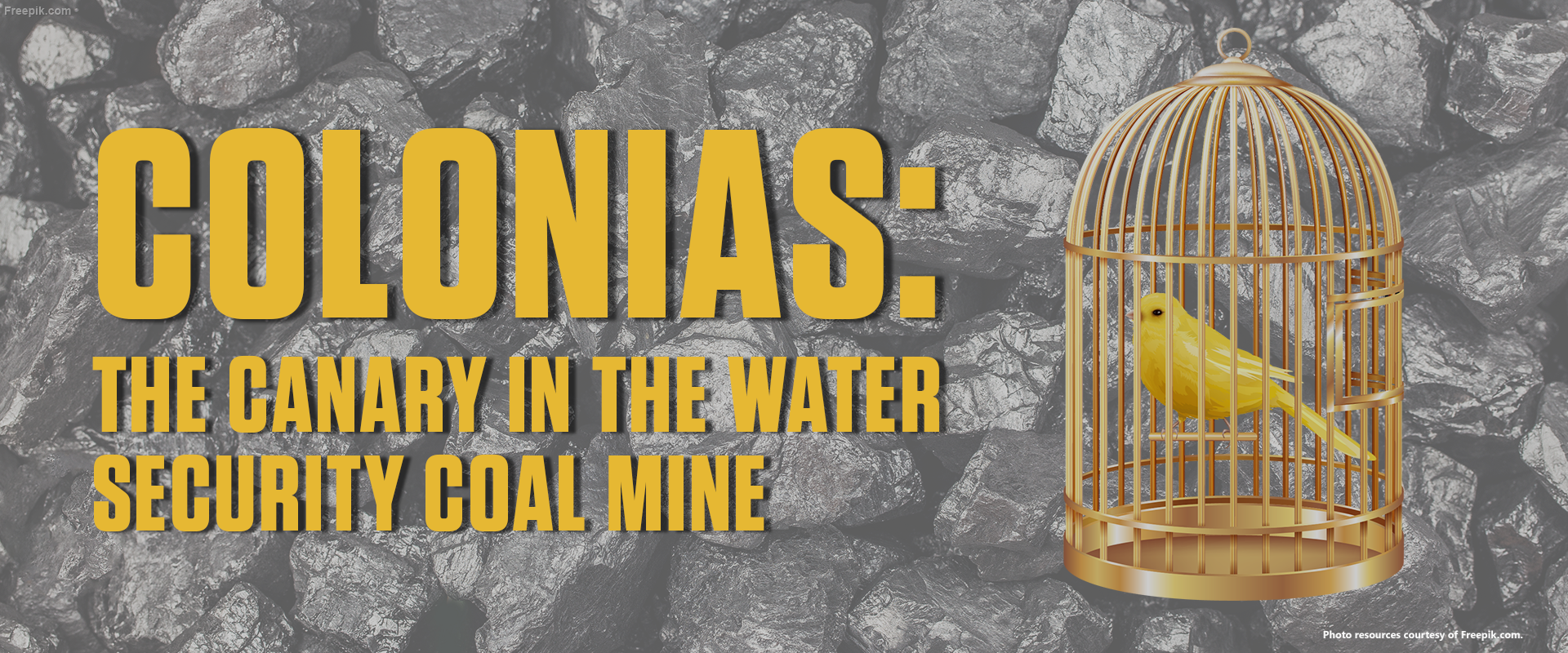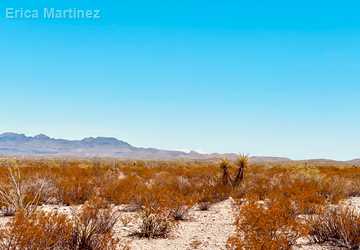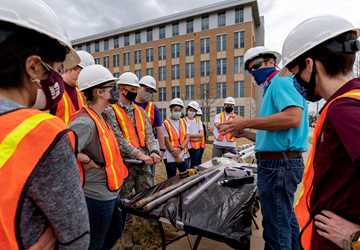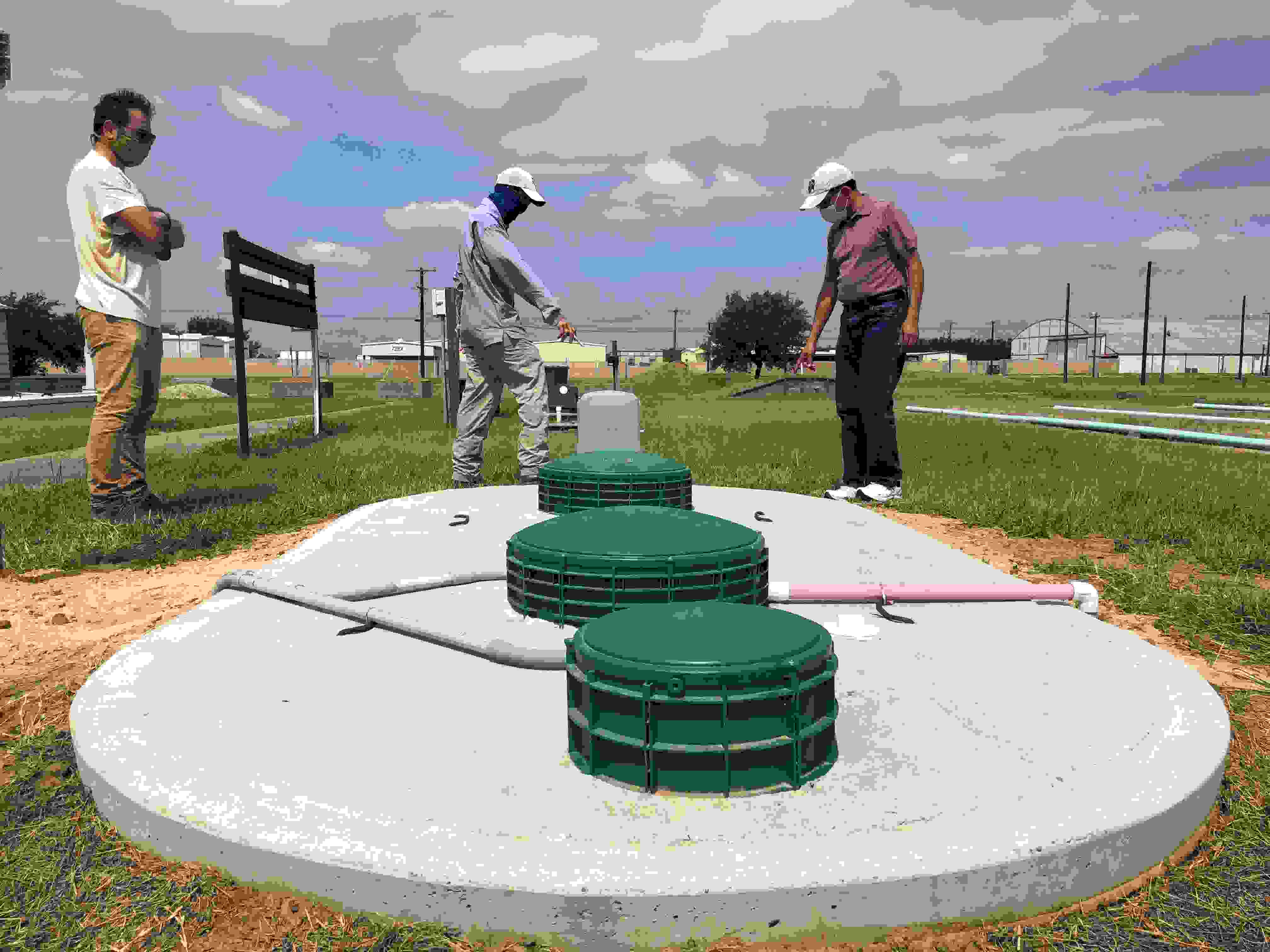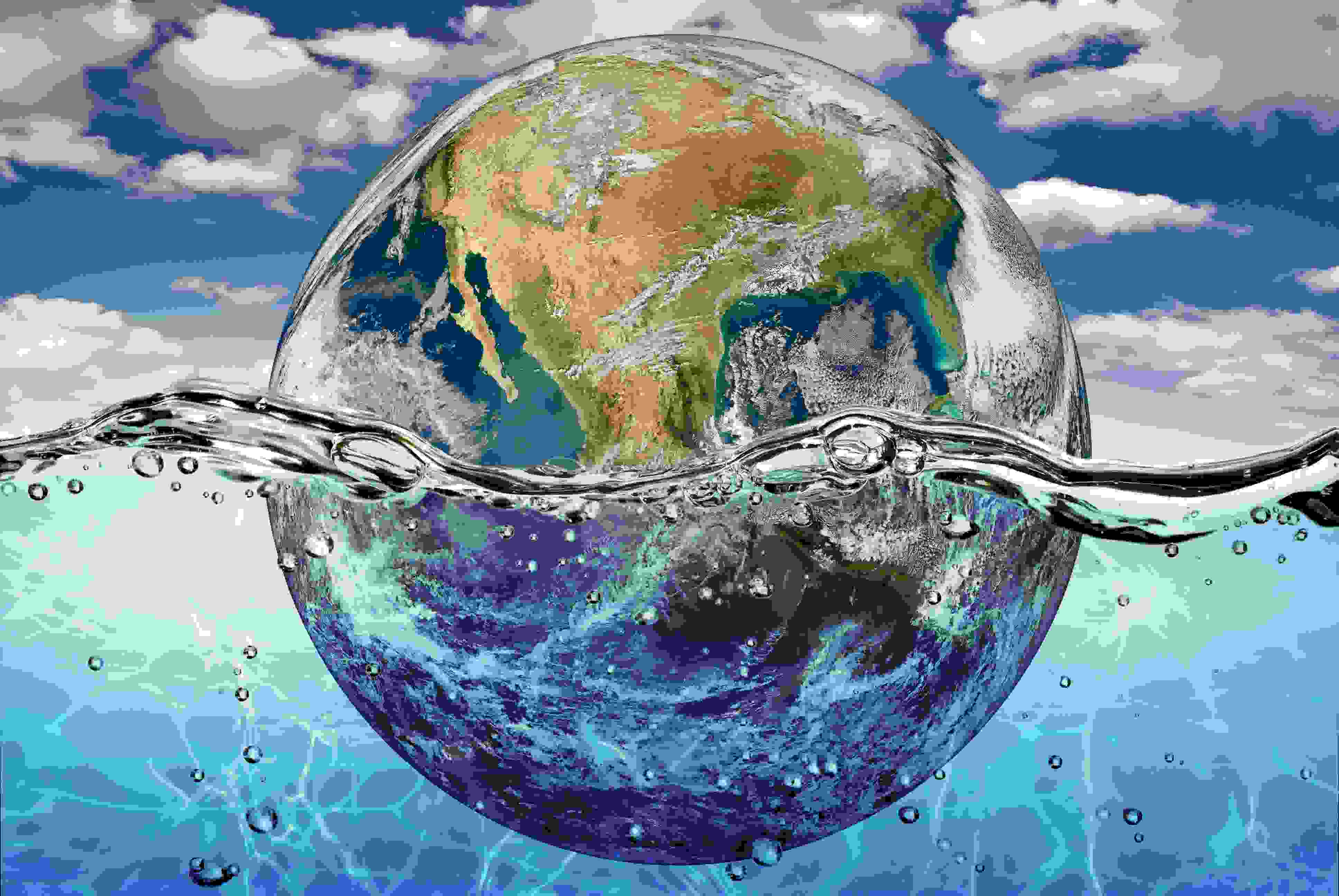Across the United States, more than two million people lack access to running water and basic indoor plumbing. Those who have access to water may still be without water that is safe, reliable and affordable. Between June 2016 and June 2019, nearly 130 million people’s drinking water came from distribution systems in violation of the law.
As climate change leads to increased drought and disrupts water infrastructure systems, it’s imperative to understand and address water insecurity, said Wendy Jepson, Ph.D. Jepson is an associate director of research (social science) at the Texas Water Resources Institute and a University Professor in the Texas A&M University Department of Geography.
Jepson described colonias — unincorporated subdivisions along the U.S.–Mexico border — as a “canary in the coal mine” of water insecurity in the United States. She said that addressing the challenge of water insecurity starts with places like colonias.
The colonias are home to roughly 840,000 people, according to a 2015 report from the Rural Community Assistance Partnership. There are more colonias in Texas than in any other state. More than 40% of colonias residents live below the poverty line, and 20% live just above it. At least a third of colonias do not have secure access to water services, wastewater services, or both.
Shaping water insecurity in the colonias
The development of the colonias in the mid-20th century was “driven by a need for low-cost labor,” said Amber Wutich, Ph.D. Wutich is the director of the Center for Global Health at Arizona State University (ASU) and a President’s Professor of anthropology in the ASU School of Human Evolution and Social Change.
That “low-cost labor” was often in agriculture and maquiladoras, which are manufacturing plants on the border.
“People who were supplying that labor had to create a standard of living out of very low salaries, salaries that are not probably appropriate to the cost of living in United States,” Wutich said. “This meant that people couldn’t live in conventionally zoned housing in the United States. So colonias emerged as a kind of informal settlement that offered a solution for people who were working in maquiladoras and farming labor and other low-income professions.”
Estimate reading time: 12 minutes
As climate change leads to increased drought and disrupts water infrastructure systems, experts say it’s imperative to understand and address water insecurity in Texas.
More Information
- Watered Down Justice, Natural Resources Defense Council
- U.S.-Mexico Border Needs Assessment and Support Project: Phase II Assessment Report, Rural Community Assistance Partnership
- The soft path to water: A conservation-based approach to improved water access and sanitation for rural communities, Journal of Soil and Water Conservation
- Planning of survivable nano-grids through jointly optimized water and electricity: The case of Colonias at the Texas-Mexico border, Applied Energy
Want to get txH20 delivered right to your inbox? Click to subscribe.
Early land buyers in the colonias were promised water utilities and other infrastructure, which never appeared. Since then, Jepson said that the colonias’ continued lack of water security is sometimes explained away as a product of poverty and remoteness. But, she said, that isn’t a sufficient explanation.
“This is not a natural evolution of poverty. Poverty doesn’t explain this. If it did, water insecurity would be more widespread and common,” Jepson said.
Instead, Wutich said the “core issue” driving water insecurity in the colonias is a phenomenon called “municipal underbounding.” When municipalities expand to include nearby developments, they are obligated to extend city services — such as water, wastewater and paved roads — to the new communities. If municipalities choose to not include those nearby developments within their official boundaries, that’s municipal underbounding.
“If colonias become incorporated as part of cities, then this problem of extending infrastructure would become resolved,” Wutich said. “But if you look at city limits in Texas, or in other places, they just will skip around the colonia. It gets very clear on that. It’s a very specific set of exclusions with regard to who gets to be part of the city.”
That exclusion has in turn shaped the colonias’ water access.
“The ways in which people are connected to infrastructure are explicitly connected to the ways in which they are connected socially and culturally and politically to other systems in society,” Jepson said.
“There’s a long history of racial discrimination in housing and infrastructure access that shaped the social life of South Texas. So emerging out of that — once you have racial segregation, access to infrastructure and access to housing are mapped onto that.”
Political mobilization in the colonias in the 1980s led to legislative changes and investment, and many colonias residents have since been connected to community water systems. Colonias that remain unconnected tend to be more isolated and more expensive to connect; therefore, they often rely on expensive hauled water from private providers.
[Water insecurity] is not a natural evolution of poverty. Poverty doesn’t explain this. If it did, water insecurity would be more widespread and common.
Wendy Jepson, Ph.D.Water insecurity’s human impact
Connection to a water system isn’t enough. To be water secure, the water also needs to be affordable, sufficient, reliably available and safe to drink.
Whatever the cause, water insecurity has numerous health, economic and social impacts, said Nayeli Holguin, an environmental engineering master’s student at the University of Texas at El Paso (UTEP). Holguin has worked with the former and current directors of UTEP’s Center for Environmental Resource Management (CERM) on colonias water research. Her master’s thesis focuses on the costs and consequences of having to rely on hauled water in some colonias.
People can be injured in the process of hauling and loading massive tanks of water or can contract waterborne illnesses from contaminated water, Holguin said. They may also have to make impossible decisions about using and getting more water, with far-reaching effects.
“They might have to pick one activity over the other in terms of water usage. They’ll have to decide, ‘Okay, well, do I want to bathe my kids? Or do I want to wash the dishes or do laundry?’” Holguin said. “There’s also lost income and lost wages for people who have to go and haul water at a certain time.”
The paths to water
Getting safe, reliable, affordable access to water would go a long way towards reducing colonias residents’ uncertainty, fear and stress, said Bill Hargrove, Ph.D., former director of CERM.
“We all want that. I don’t think that’s unusual that people would want that,” Hargrove said. “It improves overall quality of life.”
Generally speaking, Hargrove said there are two paths to water access: the “hard path” and the “soft path.”
“The hard path is the typical system of providing water, where you have a centralized source, centralized treatment and then delivery by piping to homes. That’s the typical hard engineered system,” he said.
“The soft path is kind of the reverse of that: depending as much as you can on local resources, sources and conservation. So it’s mainly decentralized sources, decentralized treatment and use on-site,” he said. He gave rainwater harvesting and using point-of-use filters as examples of decentralized water strategies.
Both hard and soft path options have their benefits and drawbacks.
“In a hard-engineered system, the utility takes care of everything. If the pipes break, they fix it; the water is already treated; you don’t have to worry about it,” Hargrove said. With soft path solutions, “the onus is on the user to both pay for and maintain everything.”
Still, soft path solutions are more affordable, and the water doesn’t have to travel as far. The hard-engineered system is the most well-known and commonly used system in the United States, but Holguin, who coauthored a study on the soft path to water with Hargrove in 2020, said putting in pipes over long distances can be prohibitively expensive.
New technology could stretch the reach of soft path solutions further. A team from Texas A&M and 1898 & Co. has designed a water-energy nanogrid. The truck-mounted system could supply 200 people with 30 liters of clean water per day each over a two-week period, as well as electricity, said Le Xie, Ph.D., and Shankar Chellam, Ph.D., senior authors on the 2020 nanogrid study and professors in the Texas A&M College of Engineering. The next step for the research would be to build a prototype and field test it.
“We did our work in an air-conditioned lab with proper temperature control. We did not evaluate what happens when the truck is bouncing around,” Chellam said. “Do these systems actually work in the blazing heat of the summer in the dusty areas of the colonias? That needs to be done before it can be made into a practically implemented product.”
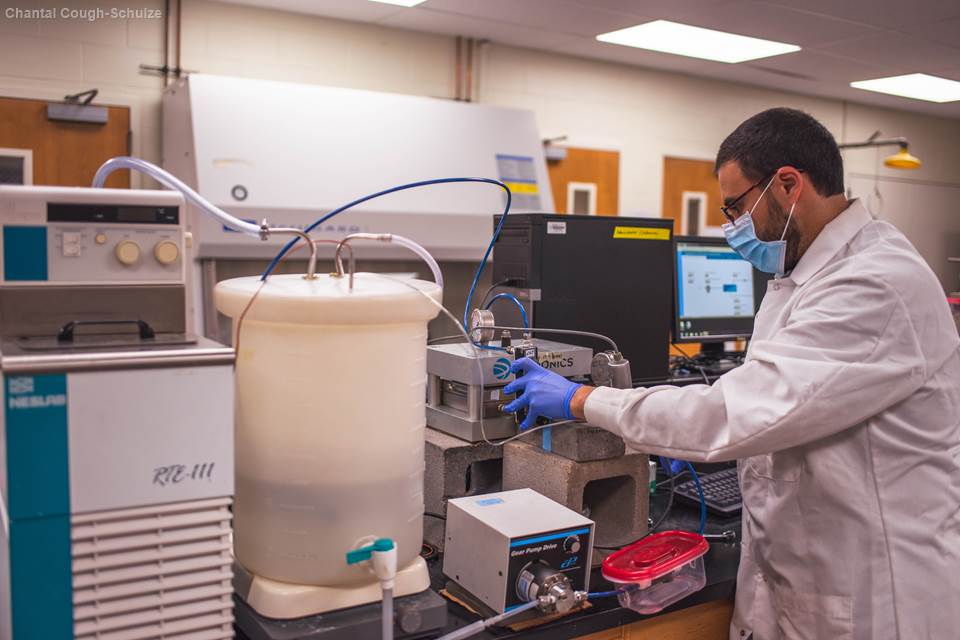
Creating solutions communities want
Moving solutions from the lab to the field will require “boots on the ground who understand the exact scenarios in the colonias,” Chellam said. Understanding that starts with asking colonias residents what they think.
“The starting place is to sort of take a step back and engage with the colonias communities,” Jepson said. “They are well-organized, vibrant, problem-solving communities. So having a conversation — What would you like? How would you like to solve this? — that to me is the first step.”
As with any community, engaging with colonias requires earning trust, said Alex Mayer, Ph.D., who is the current director of CERM and a professor of civil engineering at UTEP.
“Universities are great at doing research, but they may not have the trust in these communities,” he said. “Some of the colonias, I think they’ve been studied to death. They have researchers come in, and they get studied for a year or something, and then the researchers disappear.”
Researchers, Wutich said, need to do better. That starts with using good research ethics. Researchers should be clear about their capabilities, share research results with the community and ensure community members know how to opt out if they want to. And above all, researchers should respect community members’ time, knowledge and experience. This starts with earning the community’s trust by including them in the process.
Earning community trust is both more ethical and makes for better solutions that people will actually want and use, said Alicia Cooperman, Ph.D., assistant professor in the Texas A&M Department of Political Science.
Cooperman, along with Mayer and others, is beginning a study focusing on developing a framework for monitoring decentralized water infrastructure. The framework will be co-developed with colonias near El Paso that rely on hauled and bottled water.
“The goal of the project is essentially to have a back-and-forth dialogue between researchers and residents in the colonias. We will meet with residents and local leaders, share some ideas of different potential water systems and discuss the pros and cons with the broader community,” Cooperman said.
One of the questions the research team will be asking is what people need in order to trust that water being delivered is clean.
“There is an often very appropriate distrust of tap water,” Cooperman said. “So if we’re going to spend a lot of money to put in a new tap water system, is that something that people are going to trust and use?”
Community involvement will therefore be key for ensuring sustainable water security, Wutich said.
“A solution that comes from academic scholars that doesn’t involve the perspectives and knowledge and efforts of community members isn’t going to last,” she said. “It doesn’t have legs.”
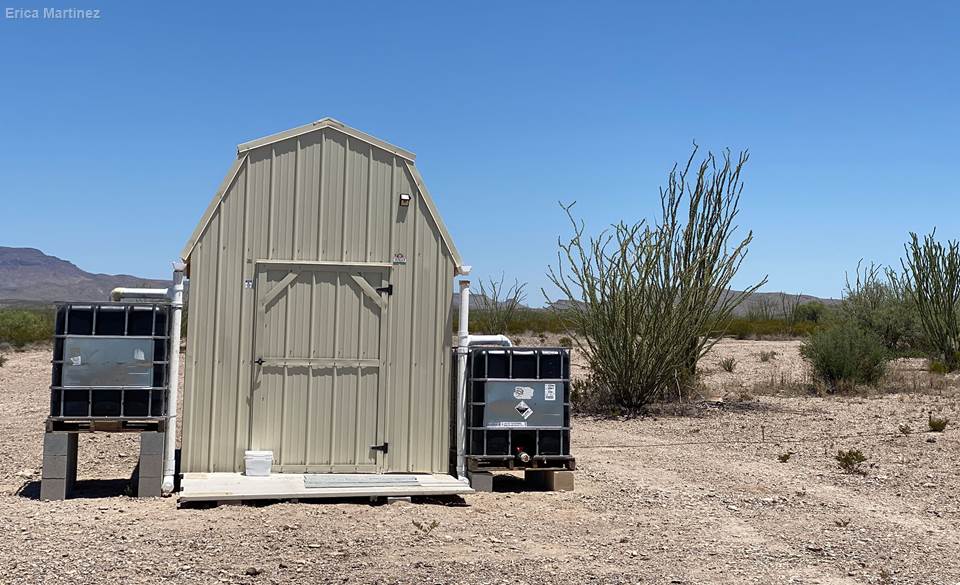
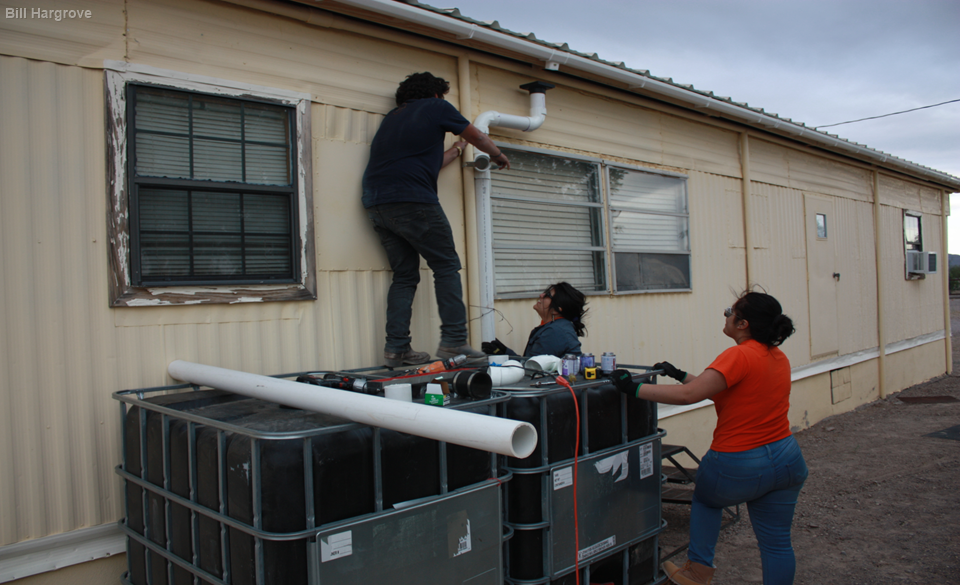
Many needs require many solutions
Colonias have many different water security needs. Addressing those needs will therefore require many different solutions.
“It’s a complex problem; you can’t have one solution for everything,” Jepson said.
Decentralized solutions such as the water-energy nanogrid, rainwater harvesting and point-of-use filters can support communities in the short term, or longer, if that’s what communities prefer. But temporary decentralized solutions alone will not be sufficient. To reach the long-term goal of getting everyone on safe, affordable, reliable community water systems, Jepson said there needs to be a paradigm shift towards a belief in the human right to water security.
“Until, and only until, we are able as a community, as a society, as a state, to commit to a human right to water security and have that inform subsequent policy, technical interventions are simply band-aids, and we’re not going to solve the fundamental issues,” Jepson said. “We’re not there yet. We, as a community, as a state, have not had that conversation.”
Tackling those short- and long-term goals will require a multidisciplinary task force. Jepson said meeting those goals will require colonias community members, engineers working on decentralized water treatment, finance whizzes, and community involvement and empowerment advocates. There will need to be researchers developing common definitions and metrics for affordability and other terms, boots on the ground gathering data in communities and political minds pushing for policy that acknowledges the human right to water security.
“It’s an all-hands-on-deck situation,” Jepson said.
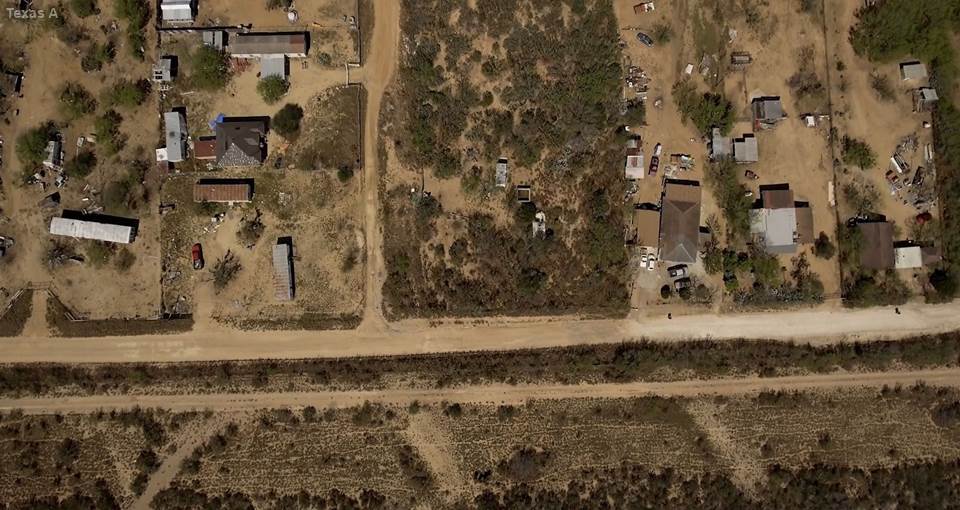
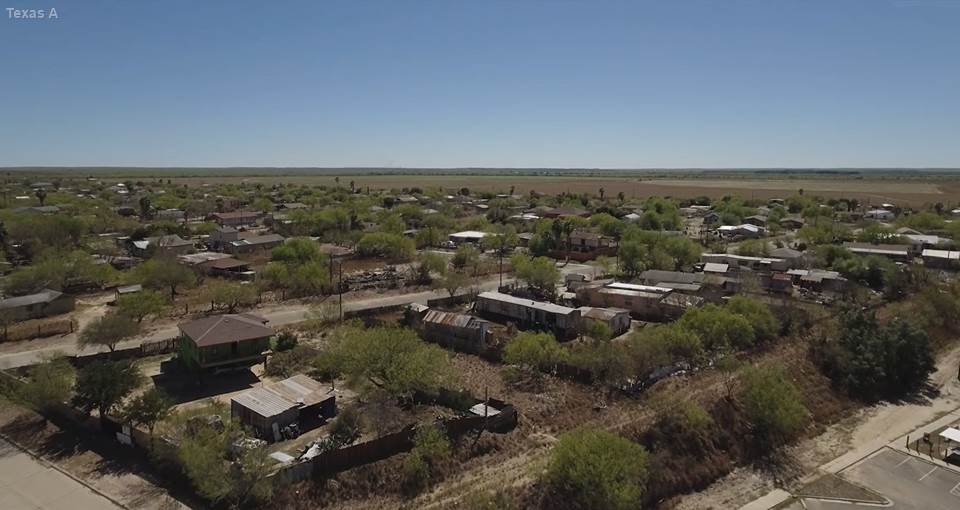
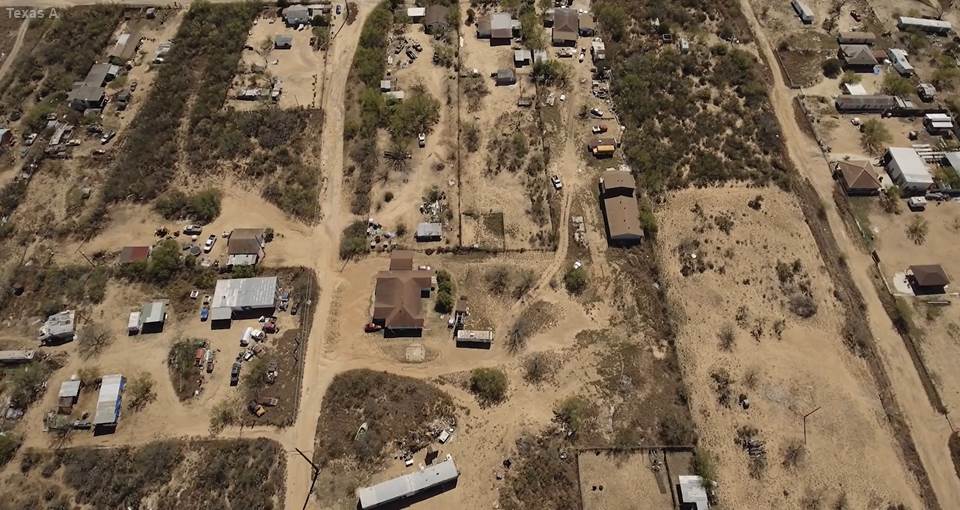
Canary in a coal mine
The hands already on deck are hard at work. All the research being done — by Jepson, Holguin, Chellam, Mayer, Wutich, Cooperman and more — can be used to develop action plans and funding proposals for implementing solutions. Those solutions will be valuable beyond just the colonias.
“The colonias are a canary in the coal mine,” Jepson said.
“When you talk about affordability, reliability and water quality, then the problems faced by colonias residents actually become a more universal problem of water security in the United States. They’re facing very similar problems as other lower income communities are throughout the country, such as in Alabama, Flint, Detroit, South Milwaukee or the Central Valley, California.”
The number of people in the United States without access to safe, reliable, affordable water — already in the millions — will increase in the future, Jepson said. Climate change is fueling droughts that result in decreased water availability, as well as extreme storms and wildfires that destroy existing water infrastructure.
Addressing water insecurity will require having some hard conversations about what the future looks like, Jepson said. But having those hard conversations — and turning them into action — will lead to a better water future for everyone, Wutich said.
“The reason water insecurity is not solved is not because we don’t know how. What’s happening now is that people are stepping in and saying — there may not be large-scale political will to address the needs of communities. But we care, and we want to find another way to address these needs, because they have to be met,” Wutich said.
“Everybody should be afforded safe, secure, abundant water. There shouldn’t be water apartheid.”
Explore this Issue
Authors
As a communications specialist for Texas Water Resources Institute, Chantal Cough-Schulze worked with the institute’s communications team writing articles for and editing txH2O magazine and TWRI's news section, developing TWRI multimedia materials and editing reports and education and outreach materials. She also served as the managing editor for the Texas Water Journal.

